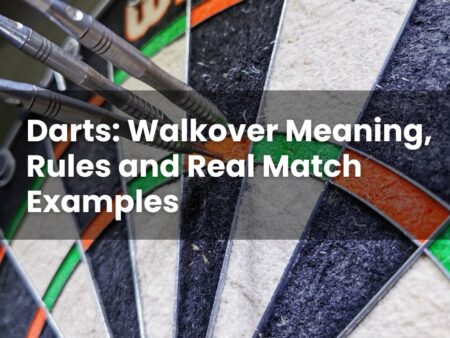Horse racing has been part of British sport for centuries, and betting on races remains a major part of it.
If you have ever looked at race odds or betting slips and felt unsure what they mean, this guide can help you understand. It explains how to place a bet, the different bet types, what the odds represent, how to read a racecard, and what to consider before betting.
Everything here is written for beginners and focuses on how horse-racing betting works in the UK, keeping it simple and responsible.
Getting Started With Horse Racing Betting
In the UK, all online bookmakers offering horse-racing markets must hold a licence from the UK Gambling Commission (UKGC). This means they follow strict rules that help to keep gambling fair and safe.
To bet online, you’ll need to open an account with a licensed bookmaker. You’ll be asked to provide your full name, date of birth and address. Most betting sites carry out electronic checks first to confirm your age and identity. If these checks can’t be completed automatically, you may be asked to upload documents, such as photo ID or proof of address. These verification steps are required by law to confirm you’re over 18 and to help prevent any potential fraud or misuse.
Once verified, you can deposit funds using one of the payment methods accepted by your chosen bookmaker, such as a debit card, bank transfer or approved e-wallet. Each site should list its own limits and processing times.
When your account is ready, you can explore upcoming races. Simply choose a race, look through the runners, review their odds, select a horse, decide your stake and confirm your bet on the slip. The bet should appear in your open bets until the result is confirmed.
What Are the Main Types of Horse Racing Bets?
There are several ways to bet on a race, but three of the most common are:
- Win Bet: You back one horse to finish first.
- Each-Way Bet: You back the horse to win and to finish in a placed position (such as first, second or third, depending on race terms).
- Forecast Bet: You predict which horses you think will finish first and second, in the exact order.
These options differ in cost and difficulty. A win bet is straightforward, but pays only if your horse wins. Each-way bets give a return if your horse finishes in a paid place, but cost double because they cover two outcomes. Forecasts are harder to get right, but have the potential to return more when correct.
How Do Horse Racing Odds Work?
Odds show two things: how much you could win if your bet is successful and how likely the bookmaker believes that outcome is.
In the UK, odds are usually written as fractions, such as 5/1. This means you could receive £5 profit for every £1 staked, plus your £1 stake back. Fractional odds show profit relative to stake, not the total return.
Some sites also show decimal odds. In that format, 5/1 becomes 6.0, as the total includes your original stake.
Odds move constantly before a race, depending on how people are betting and new information, such as weather or jockey changes. You can either take the current odds at the time you place your bet, or choose the Starting Price (SP), which is the official price announced when the race begins.
Lower odds, such as 2/1 or Evens (1/1), indicate a horse may be expected to do well. Higher odds, like 20/1, suggest a lower perceived chance of winning, but a higher potential payout if it does.
Popular Betting Markets in UK Horse Racing
Beyond basic bets, bookmakers may also offer various markets that give different ways to bet:
- Place Only: You bet on the horse to finish in a paid position. The number of places depends on the race and bookmaker.
- Without the Favourite: The favourite is ignored when the bet is settled. Your horse needs to finish ahead of all others apart from the removed runner.
- Specials and Enhanced Odds: Some sites may offer improved odds on selected horses or events.
- Accumulators: You combine several bets across races into one, increasing possible returns, but also the difficulty of winning.
Because bookmakers set their own market terms, it’s important to check the race conditions and rules before placing a bet.
How to Read a Racecard?
A racecard shows essential information about each race and runner. Learning to read it can help you understand what you’re betting on.
- Race Time and Name: When and where the race takes place, e.g. “3:15 Doncaster.”
- Horse Number and Name: Identifies each runner.
- Jockey and Trainer: The rider and person responsible for the horse’s training.
- Form Figures: A quick record of the horse’s recent results, such as “231-4.”
- Age and Weight: The horse’s age and the total weight it carries, including jockey and gear.
- Draw: For flat races, this shows the stall position. On some tracks, certain draws may perform better than others.
- Official Rating: A numerical measure of the horse’s ability, used in handicaps to try and balance competition.
- Silks: The colours worn by the jockey to help identify the horse during the race.
Understanding these details gives you context about each horse’s performance and the race’s setup.
What Are the Different Bet Types in Horse Racing?
Win, Each Way and Place Bets
A win bet is the simplest form — your horse must finish first for your bet to succeed.
An each-way bet combines two wagers in one:
- One part on your horse to win.
- One part on your horse to place (e.g. top two, three or four, depending on the race and bookmaker).
A £1 each-way bet costs £2 because you’re betting twice. If your horse wins, both parts pay out. If it only places, you’ll still get a smaller payout based on a fraction of the odds, usually one-fifth or one-quarter.
A place bet is only on the horse to finish in a paid position. This option may not be available on all markets, but tends to be more common in larger races.
Forecast and Tricast Bets
A forecast requires you to predict which horses finish first and second in the correct order. Some bookmakers also offer a reverse forecast, where you cover both possible finishing orders, doubling your stake.
A tricast extends this by predicting the first, second and third horses in exact order. Because it’s harder to get right, a tricast often returns much more if successful. Bookmakers may only offer tricasts when there are enough runners, usually eight or more.
These bets rely entirely on the exact finishing positions, so they are challenging and best approached with caution.
Multiples and Accumulators
A multiple links two or more selections together into one bet.
- Double: Two selections in different races — both must win.
- Treble: Three selections — all must win.
- Accumulator: Four or more selections combined. All selections need to win for the bet to return anything.
Multiples increase potential payouts because winnings from one part roll over to the next. However, if any selection loses, the entire bet is usually settled as a loss. Some bookmakers may offer “system bets,” which split selections into smaller combinations to try and reduce that all-or-nothing element.
What Factors Should You Consider Before Placing a Bet?
Before placing a bet, it can help to understand what might influence a race’s outcome:
- Form: How well the horse has performed recently.
- Ground Conditions (Going): Whether the track surface is soft, good or firm — some horses prefer certain types of ground.
- Distance: A horse that has previously performed well over the same distance is often considered a more reliable option than one attempting a new trip for the first time.
- Trainer and Jockey: Experienced combinations or those with good records at specific courses can be worth noting.
- Draw: In flat races, the starting stall may help or hinder, depending on the course.
- Market Movement: Odds often shorten or drift based on betting activity and news updates.
- Weather: Rain or heat can change the going, affecting horses differently.
These points can help you make more informed choices, but racing involves chance, so results can never be certain.
How to Place a Bet on Horses Online?
Once you’ve chosen a licensed bookmaker:
- Log in to your verified account.
- Add funds using a listed payment option.
- Go to the horse racing section.
- Pick a race and a horse.
- Select your bet type and stake.
- Review your potential return, then confirm.
Your bet should then appear in your open bets list. Once the race result is official, any winnings are automatically credited. If a horse you backed does not run, the bookmaker usually voids that part of the bet and returns your stake. However, this can vary, so you might want to check.
Horse Racing Betting Tips for Beginners
- Set a clear budget and only bet what you can afford to lose.
- Take time to read the racecard before betting.
- Remember that odds reflect probability — not certainty.
- Avoid chasing losses; each race is independent of the last.
- Use safer-gambling tools such as deposit limits or time reminders if they are offered.
- Take breaks.
Horse racing can be enjoyable when approached with care and understanding. Treat it as a form of entertainment, not a source of income, and remember that outcomes depend partly on chance.








